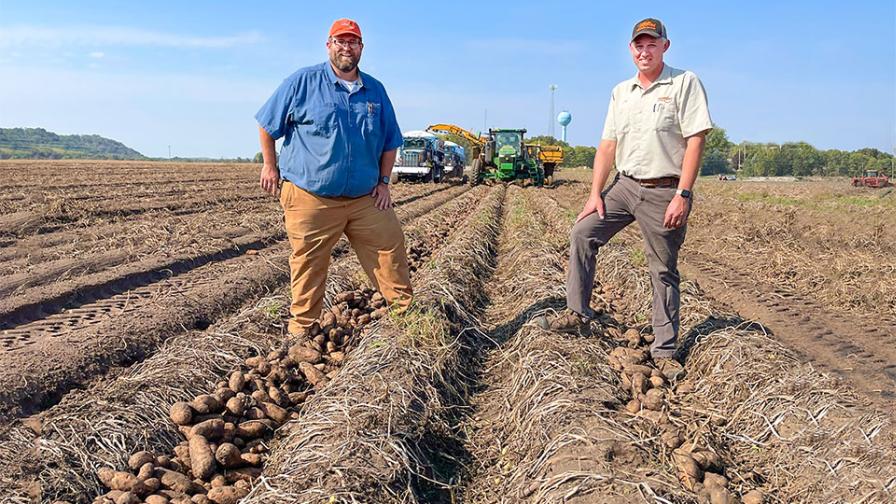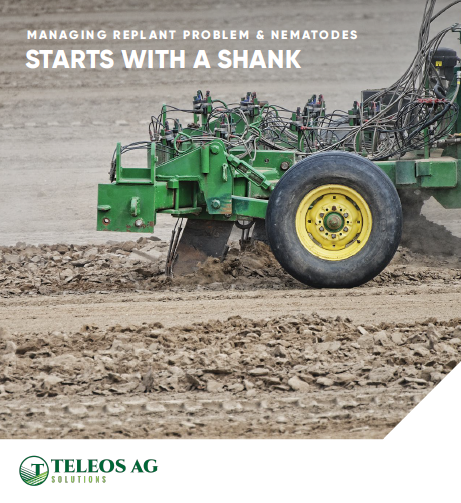Why More Veggie Growers Should Consider Partnering With Their Neighbor

Beau Hartline, Farm Manager for Alsum Farms and Produce, Inc. (left), and Joe Hartung, Farm Manager for Hartung Brothers, Inc., regularly update one another on soil health issues and pest control issues. That’s because they combine acreage at their Arena, WI, locations to get the crop rotation each needs.
Photo by Carol Miller
When I visited with Joe Hartung (Hartung Brothers, Inc.) and Beau Hartline (Alsum Farms and Produce, Inc.) to learn how they shared their acreage with each other, I was struck by how different the two men were. Joe is a tech-loving, organized type, whereas Beau has a more relaxed persona.
As you’ll read in our cover story, the two plant crops on each other’s farms to get a crop rotation they might otherwise not have.
Frankly, I was expecting them to be like brothers with years of friendship behind them. Their willingness to share their farms implied that level of trust to me. Instead, they are business associates with little in common other than both being farm managers of fairly large sites.
Importantly, they are two production-minded growers who saw an opportunity to help both farms and took it. It’s an opportunity you may want to consider taking for yourself.
It could be argued they have a unique position among vegetable growers. They both have limited crop lists (mainly potatoes for Alsum Farms and seed corn and beans for Hartung Brothers), creating a more urgent need for crop rotation.
Yet I’ve been on operations with much more diverse crop mixes where growers struggled to find the right rotations. It’s tough to balance the right soil for the crop (i.e., muck vs. sandy), the crop that pulls different nutrients from the soil, and those that attract different pests. And you need some distance from last year’s field if you don’t want to move the diseases and insects over to the new plot.
Cover crops help a lot with solving that challenge, but they’re not a cure-all. If you’re a smaller grower, it can be even more difficult. You simply do not have a lot of choice where you plant.
So consider taking a leaf from Joe and Beau’s playbook.
The key is finding the right partners. Perhaps the most important factor is working with someone you can trust to honor their contracts and in how they will treat your fields.
Luckily, you already have an advantage. You likely know the reputations of the growers closest to your farm, and you can easily get a feel for how they live up to their obligations.
As you’re plotting your next planting season, consider taking a drive around to find a grower you might want to partner with first.
Oh, One More Thing
A four-year crop rotation is the vegetable-industry norm. But for some diseases, you may want to stretch out the crop rotation a bit more. Here’s how long some diseases can last in the soil:
- Downy Mildew: Up to five years
- Fusarium Wilt: Five to 10 years
- Verticillium Wilt: Up to 10 years
- Southern Blight: At least five years









